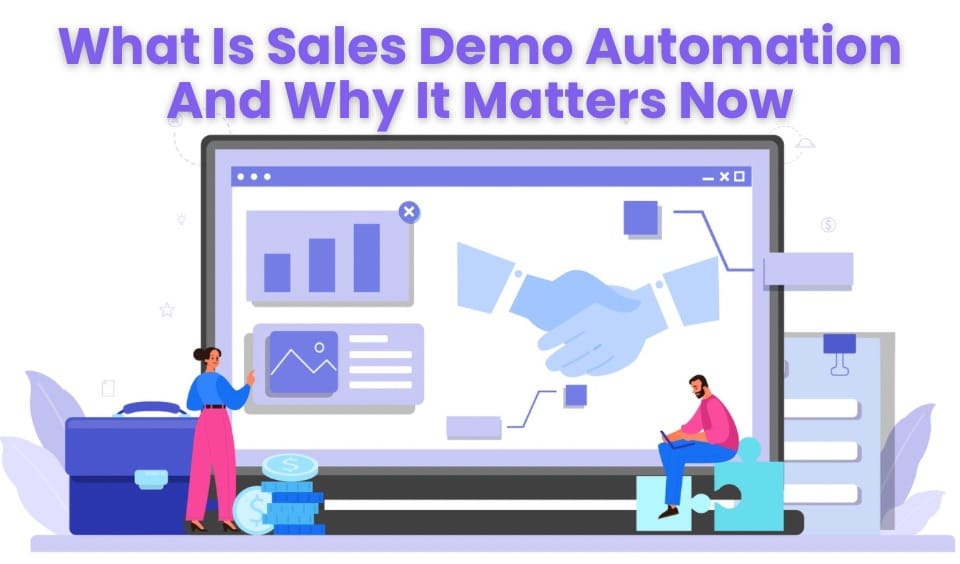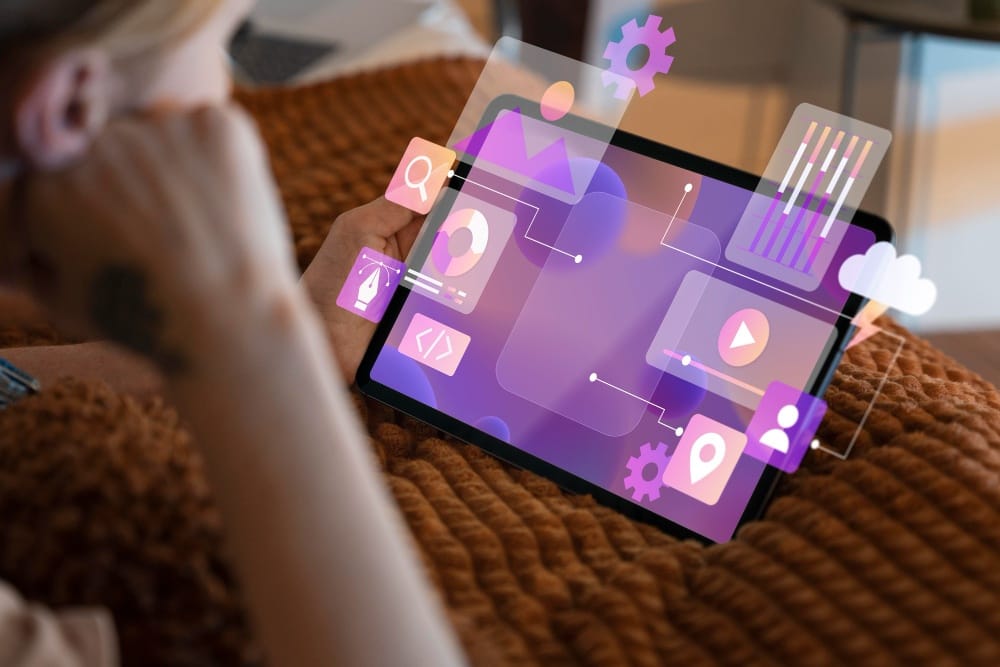Let’s be honest. No one wants to sit through a 30-minute sales call just to “see how it works.”
We’ve all been there—excited about a new tool, only to be hit with:
A clunky product tour that feels like homework
A gated demo that demands your email and patience
A salesperson walking you through slides instead of the actual product
If your SaaS relies on these old-school methods, you're losing customers before they even get a chance to experience your product. In 2025, buyers expect instant, hands-on experiences. And that’s where interactive demos come in.
This guide will walk you through how to create interactive demos that convert curious visitors into paying users, without making them jump through hoops.
What Are Interactive Demos?
An interactive demo is a hands-on product experience that lets users explore your software without the hassle of setup, downloads, or scheduling a call with sales. Instead of requiring users to watch a video or sit through a guided walkthrough, an interactive demo allows them to click, navigate, and engage with your live product in real-time, just like they would if they were actual customers.
Think of it like this: Instead of telling people how great your product is, you show them. Right away. No friction, no waiting, no commitment.
Unlike traditional demos, which often involve:
A live call with a sales rep walking through a presentation
A pre-recorded video that may not address specific user needs
A free trial that requires sign-ups, downloads, or technical setup
Interactive demos are:
Self-serve – Users can access them instantly, no sign-ups required.
On-demand – They are available 24/7, meeting buyers whenever they are ready.
Embedded anywhere – You can place them on your website, in emails, or inside ad campaigns.
Why Do Interactive Demos Matter in 2025?
The way people evaluate software has changed. Today’s buyers:
Are impatient – They want to try before they buy, instantly. If they have to wait for a sales call, they’ll move on.
Are skeptical – They don’t trust the marketer's claims or polished sales pitches; they trust hands-on experience. They need to see value before they believe it.
Prefer self-education – They want to explore your product at their own pace, without being pressured by a salesperson.
If you’re not offering an easy, interactive way to experience your product, you’re not just making it harder for potential customers to understand your value—you’re actively pushing them toward competitors who do.
Also Read: How Self-Serve Demos Drive Sign Ups & Why You Need It?
Who Are Interactive Demos For? (User Personas)
Interactive demos aren’t just for one type of user—they serve multiple audiences at different stages of the buying journey. If you’re wondering who benefits most from them, here’s a breakdown:
The “Just Browsing” Visitor – This user is casually exploring solutions but isn’t ready to commit. They don’t want a lengthy sales call or a gated trial—just a quick, hands-on preview to see if your product is worth their time.
The Decision Maker in a Hurry – This person has the authority (and budget) to make a purchase, but they won’t sit through a 30-minute pitch. If your demo doesn’t highlight value within the first few minutes, they’ll move on.
The Internal Advocate – This is someone inside a company who sees the value in your product but needs buy-in from their team or boss. They need a compelling, easy-to-share demo to make their case.
The Competitor’s User Looking for Something Better – They already use a similar tool but are considering switching. They won’t waste time filling out forms or hopping on sales calls, if your interactive demo quickly proves why your product is the better choice, they’ll pay attention.
If your product doesn’t offer an easy, engaging way for these users to experience it, you risk losing them to competitors who do.
How to Create an Interactive Demo That Actually Converts?
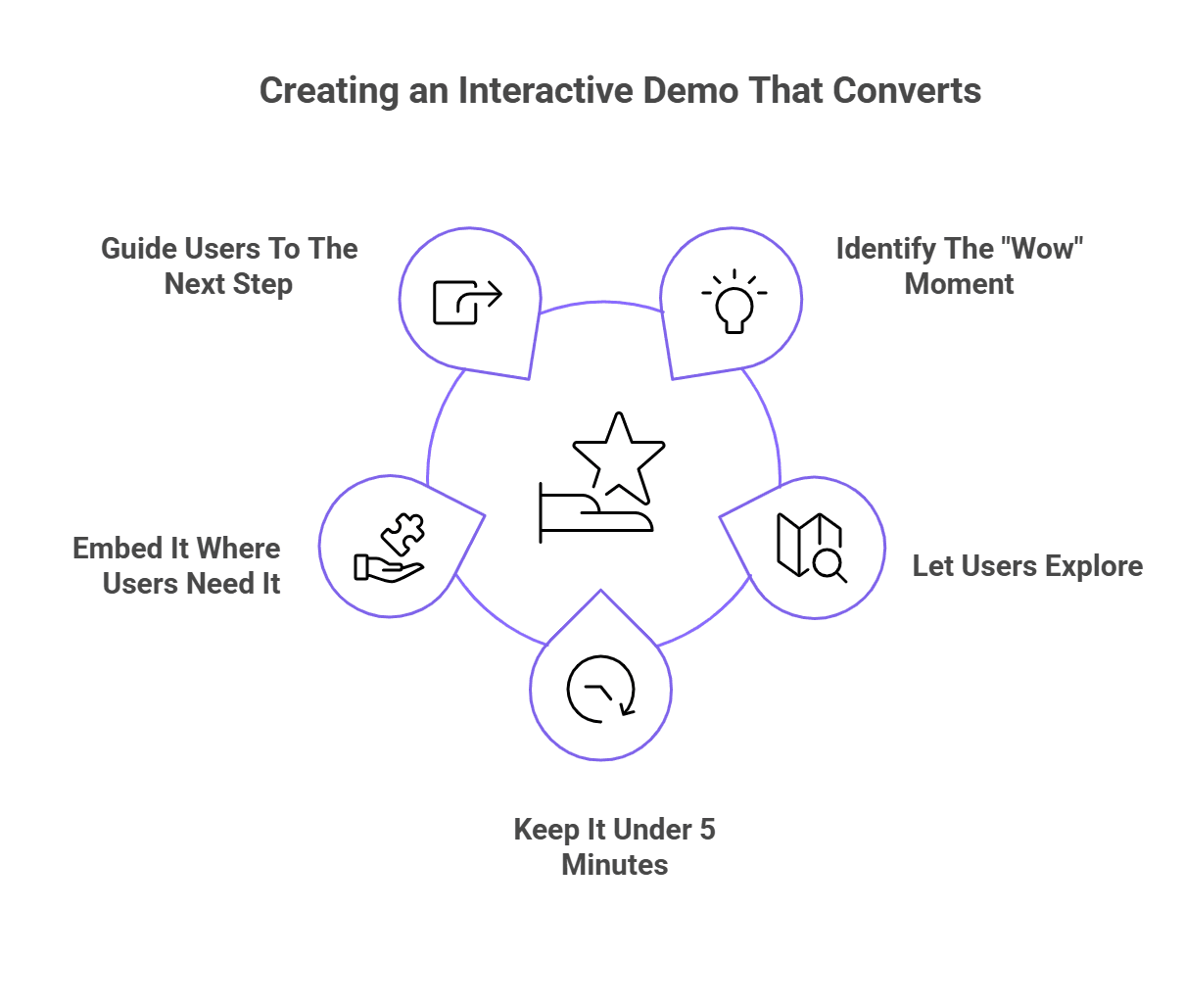
An interactive demo should do more than just show off features. It should convince users why they need your product. Here’s how to build one that actually drives conversions.
1. Identify the “Wow!” Moment First
Your demo isn’t a generic product tour. It’s a shortcut to the moment when a user realizes they need your product.
Ask yourself:
What is the #1 feature that makes people interested in our product?
How can I get them to experience that in under 5 minutes?
Examples of "Wow!" Moments:
Slack – Realizing how easy it is to create a channel and send messages.
Grammarly – Watching their writing improve in real-time.
Airtable – Dragging and dropping data into a customizable database.
SmartCue - Experiencing how effortlessly a sales rep can create and share a personalized, interactive product demo, allowing prospects to grasp specific features without a lengthy demo call.
Your interactive demo should skip straight to this moment, with no unnecessary steps, no distractions.
2. Let Users Click, Explore, and Play
A great interactive demo should feel like a game, not a tutorial. Users should be able to interact with your product as if they were actual customers.
Instead of just showing features, let users:
Click buttons and navigate menus.
Fill in sample data to see real-world use cases.
Move through workflows step by step.
See immediate results based on their actions.
Example: Dropbox’s interactive demo lets users drag-and-drop files into folders, making it instantly clear how the product works.
Use guided tooltips to highlight key actions, but keep them minimal; too much guidance can feel overwhelming.
3. Keep It Under 5 Minutes
Nobody wants to sit through a long, complex walkthrough. Your demo should be:
Bite-sized – Aim for under 5 minutes.
Focused – Showcase 1-2 key features that matter most.
Flexible – Allow users to restart or skip through parts as needed.
Example:
Figma’s demo – Shows how to create a simple design in under 3 minutes.
Notion’s demo – Walks users through note-taking without requiring an account.
The faster a user experiences value, the more likely they are to convert.
4. Embed It Where Users Need It
A great demo should be available exactly when and where users are ready to see it.
Best places to embed your interactive demo:
On your homepage – Right at the top.
Inside marketing emails – A “Try it now” button can boost engagement.
On pricing pages – Let users see the value before they buy.
Inside LinkedIn and Google Ads – Catch prospects when they’re searching for solutions.
Users shouldn't have to hunt for your demo—it should be placed where they naturally look for answers.
5. Guide Users to the Next Step
Your demo should end with a clear call to action (CTA). If users enjoy the experience but don’t know what to do next, you’re losing potential customers.
After the demo, prompt users to:
Sign up for a free trial.
Book a call with sales for a deeper dive.
Start a paid plan if they’re ready.
A great demo creates momentum—make sure you guide users to take the next step while they’re engaged.
Also Read: Enhance Email Campaigns With Self-Serve Demos for Better Engagement
How to Make Your Interactive Demo Stand Out? Best Practices
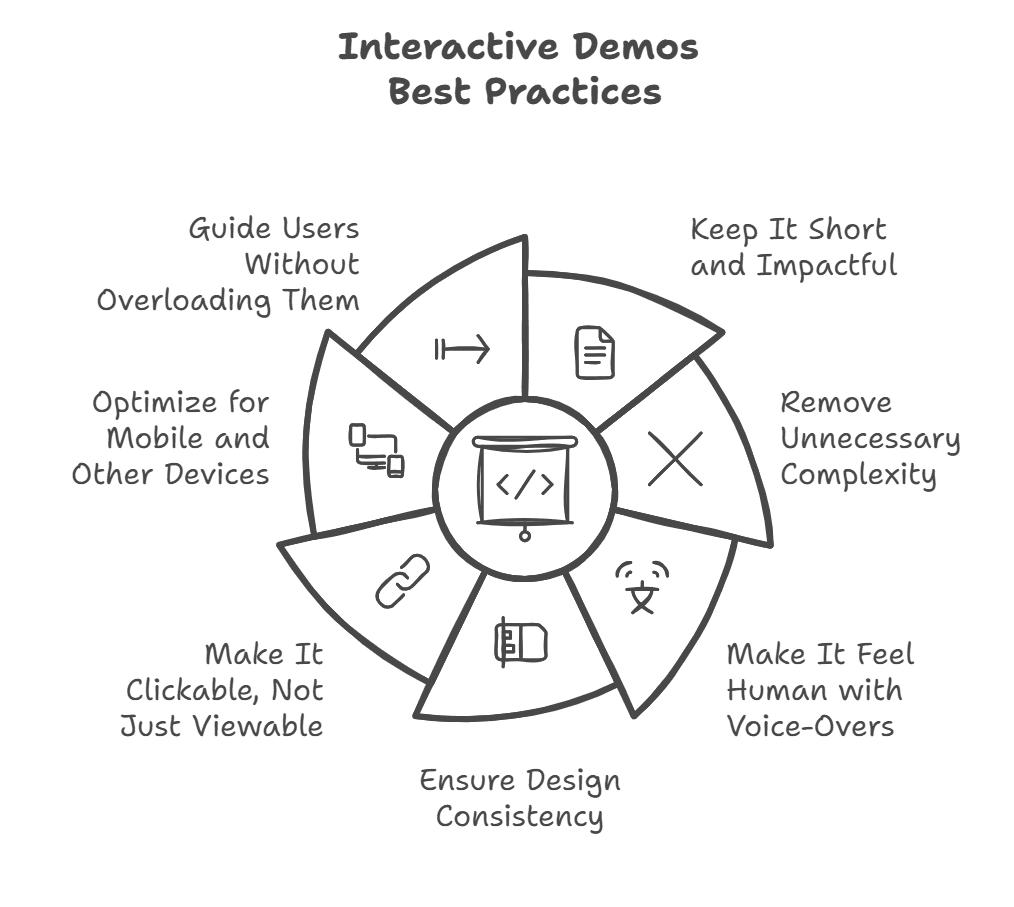
A well-crafted interactive demo isn’t just about showing off your product. It’s about making the user experience seamless, engaging, and persuasive, understanding of the value of your product. Here’s how to get it right:
Keep It Short and Impactful
Users don’t want to sit through a long, tedious walkthrough.
Focus on 1-3 key features that showcase immediate value.
Aim for under 5 minutes—any longer, and you risk losing their attention.
Think of your demo like a movie trailer—it should get users excited, not exhausted.
Remove Unnecessary Complexity
Don’t treat your demo like a training session. Buyers don’t need to learn everything, just what makes your product valuable.
Avoid overloading users with too many clicks, forms, or instructions.
If a step doesn’t showcase the value, cut it out.
Make It Feel Human with Voice-Overs
A voice-over adds personality and makes the experience feel more like a conversation than a static demo.
Instead of dry, robotic instructions, use a friendly and natural tone to guide users.
Keep the voice-over optional for those who prefer to explore on their own.
Ensure Design Consistency
Your interactive demo should feel like a natural extension of your brand.
Use your company’s fonts, colors, and UI elements to maintain familiarity.
Avoid clunky layouts; keep it clean, simple, and visually appealing.
Make It Clickable, Not Just Viewable
A great interactive demo isn’t just a video—users should be able to click, type, and explore.
Let them experience workflows, enter sample data, and trigger real interactions.
Example: Instead of showing users how to create a report, let them build one in real-time.
Optimize for Mobile and Different Screen Sizes
Not all users will access your demo from a desktop—many will be on mobile or tablets.
Ensure your demo:
Loads quickly on all devices.
Uses touch-friendly navigation.
Adapts to different screen sizes without breaking the layout.
Guide Users Without Overloading Them
Use tooltips instead of long paragraphs, keep guidance brief and actionable.
Provide clear signposts so users know where to click next.
Example: Instead of a pop-up explaining everything at once, use a step-by-step tooltip that guides users naturally.
Also Read: Boost Your Self-Serve Demos With Chatbot Integration for Better Customer Engagement
The Future of Interactive Demos in 2025
The way buyers evaluate software is changing rapidly, and interactive demos are evolving to keep up. In 2025, the most effective demos will be smarter, more engaging, and designed to fit the way modern users prefer to explore products.
Here’s what’s coming next:
AI-Powered Demos – Personalized Experiences Based on User Behavior
AI-driven interactive demos will adapt to each user’s needs in real time.
Instead of showing the same demo to everyone, AI will analyze user behavior and tailor the experience—highlighting the most relevant features based on their role, company size, or past interactions.
Example: A product manager might see automation features first, while a developer gets an API walkthrough.
Voice-Guided Demos – Interactive Walkthroughs with Voice Commands
Users will be able to navigate a demo hands-free using voice commands.
Instead of clicking through steps manually, they can say things like:
“Show me how to set up a new project.”
“What’s the best way to automate this process?”
This makes the experience feel more conversational and interactive, especially for non-technical users.
Mobile-First Demos – Optimized for Users on the Go
More decision-makers are reviewing software on their phones or tablets.
In 2025, interactive product demo software must be mobile-friendly, lightweight, and fast-loading on any device.
Example: Instead of complex desktop-style navigation, users might tap, swipe, or scroll through a guided experience designed specifically for mobile screens.
Also Read: How to Promote Self-Serve Demos Via Social Media Channels?
Build High-Converting Interactive Demos with SmartCue
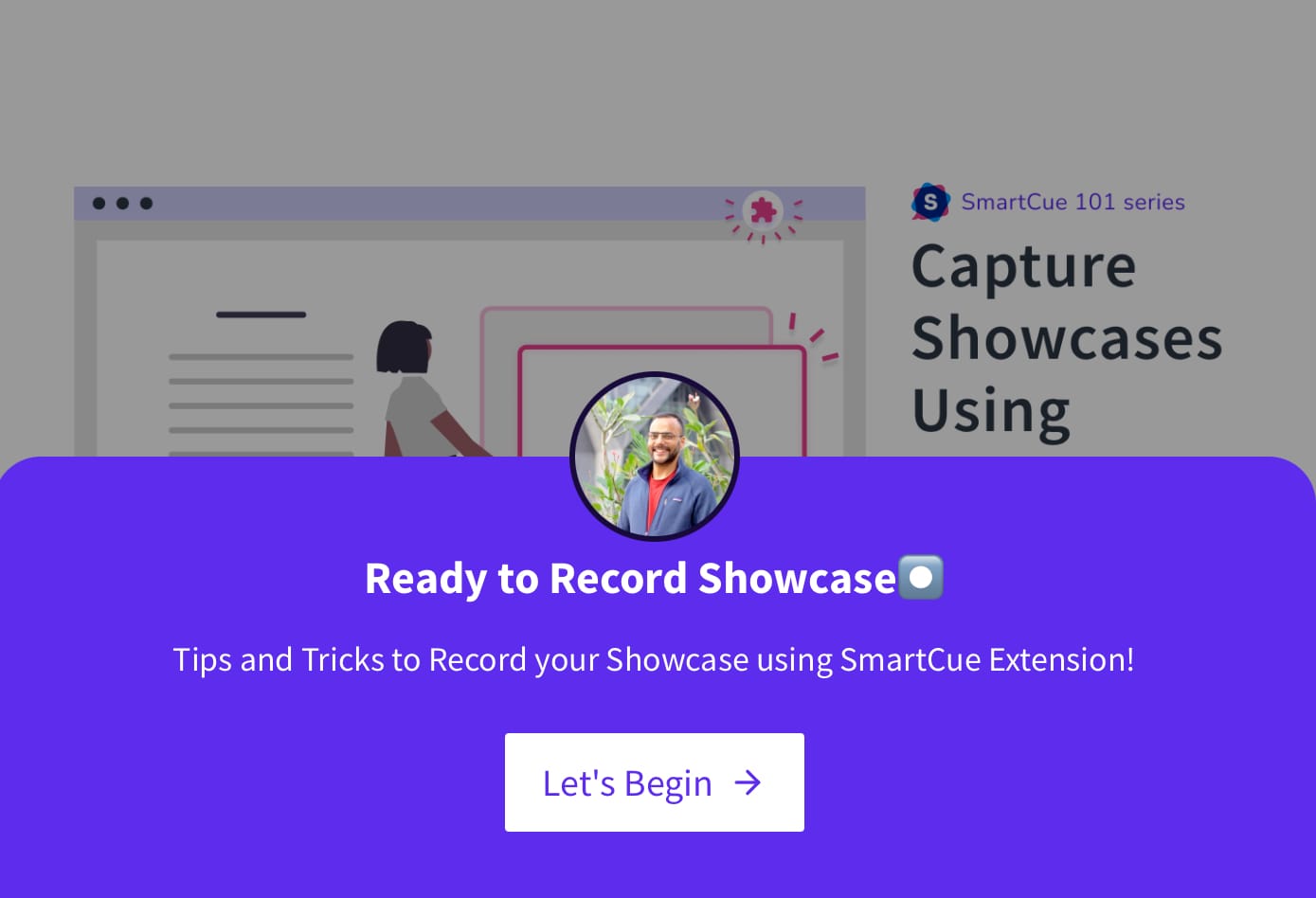
Creating an interactive demo can feel overwhelming—especially if you're trying to strike the right balance between engagement and simplicity. That’s where SmartCue comes in. Our platform is designed to help SaaS businesses build personalized, guided demos that make it easier for prospects to experience value without the friction of long sales cycles.
Here’s how you can use SmartCue to craft an interactive demo that converts:
1. Create Step-by-Step Guided Experiences
With SmartCue’s intuitive interface, you can build demos that guide users through your product’s most impactful features.
Instead of dumping users into a full-fledged software trial, create a structured walkthrough that highlights specific workflows and real-world use cases.
Example: If your product is a CRM, you can create a guided demo that shows how to add a new lead, track engagement, and close a deal—all within minutes.
2. Personalize Demos for Different Audiences
Not every user is looking for the same thing. SmartCue allows you to tailor demos based on user roles, industries, or needs.
Example:
A sales manager might see a demo focused on pipeline tracking.
A marketing executive might get a version that highlights campaign analytics.
This level of personalization ensures that every prospect sees only the features that matter to them—keeping engagement high and drop-offs low.
3. Seamlessly Embed Demos Across Multiple Channels
SmartCue makes it easy to place interactive demos exactly where your prospects need them.
You can embed demos:
Directly on your website for instant access.
Inside marketing emails to nurture leads.
In LinkedIn and Google Ads to capture interest early.
As part of your sales outreach, letting prospects explore before booking a call.
4. Track Engagement and Optimize for Conversions
One of SmartCue’s most powerful features is its analytics dashboard, which provides real-time insights into how users interact with your demos.
You can track:
Which features users engage with the most.
Where they drop off—so you can tweak the flow for better retention.
How many users convert after engaging with the demo.
This data allows you to continuously refine your demos to maximize impact.
5. Reduce Friction and Shorten Sales Cycles
Traditional sales demos require scheduling, multiple follow-ups, and manual presentations. SmartCue removes these roadblocks by offering an interactive, on-demand experience.
Prospects can explore your product at their own pace, making them more informed and ready to convert fasterwhen they finally reach your sales team.
If you want to turn passive interest into active engagement, SmartCue provides the tools to make it happen. By crafting guided, data-driven demos, you can showcase your product’s value instantly, reduce friction, and drive more conversions—all without requiring a sales call.
It’s time to let your product speak for itself.
Recording Interactive Demos with SmartCue: A Quick Guide
Creating an interactive demo with SmartCue is fast and simple. Here’s how:
Step 1: Sign Up & Log In
Start your 14-day free trial and access the SmartCue dashboard.
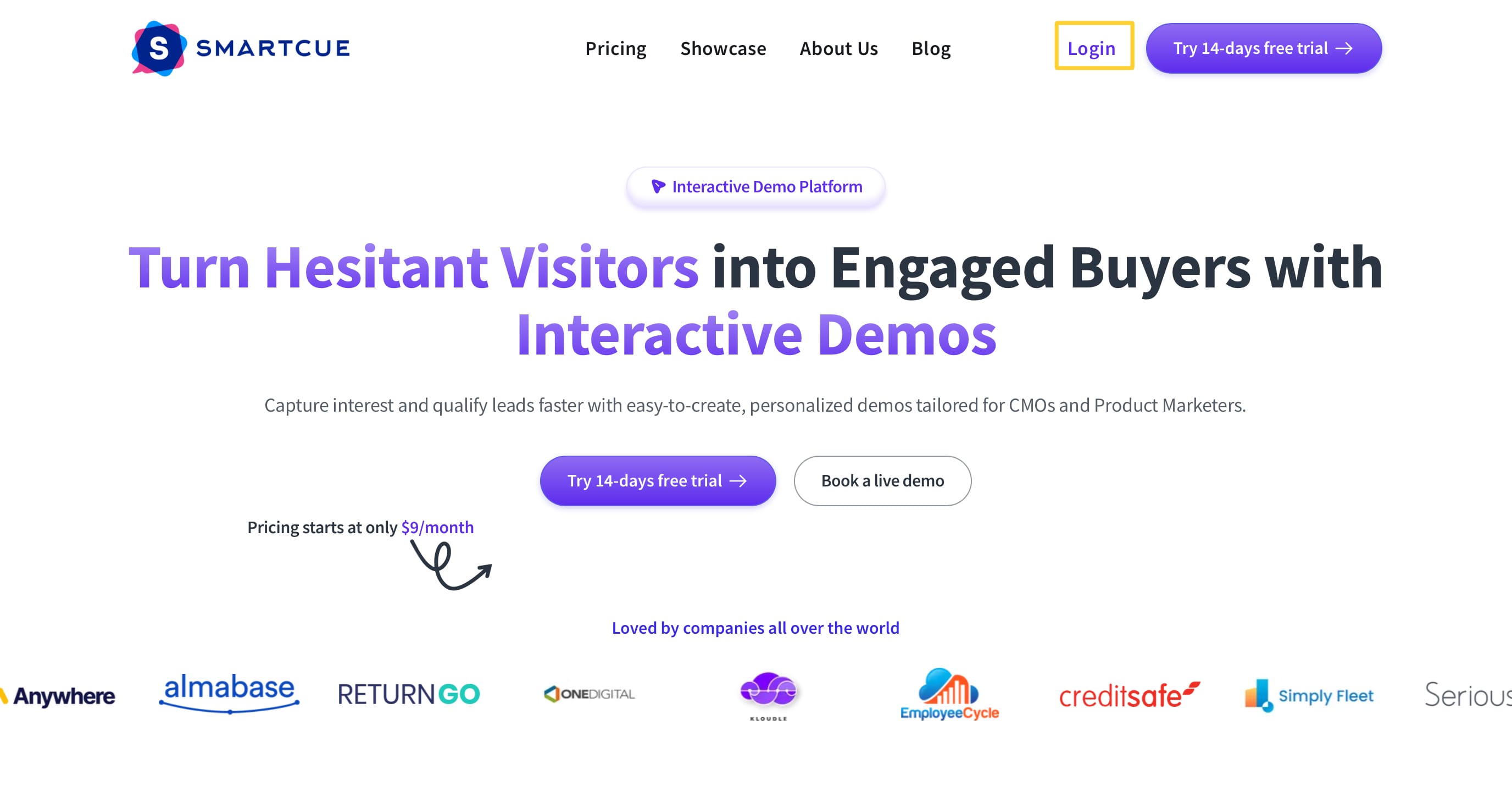
Step 2: Capture Your Demo
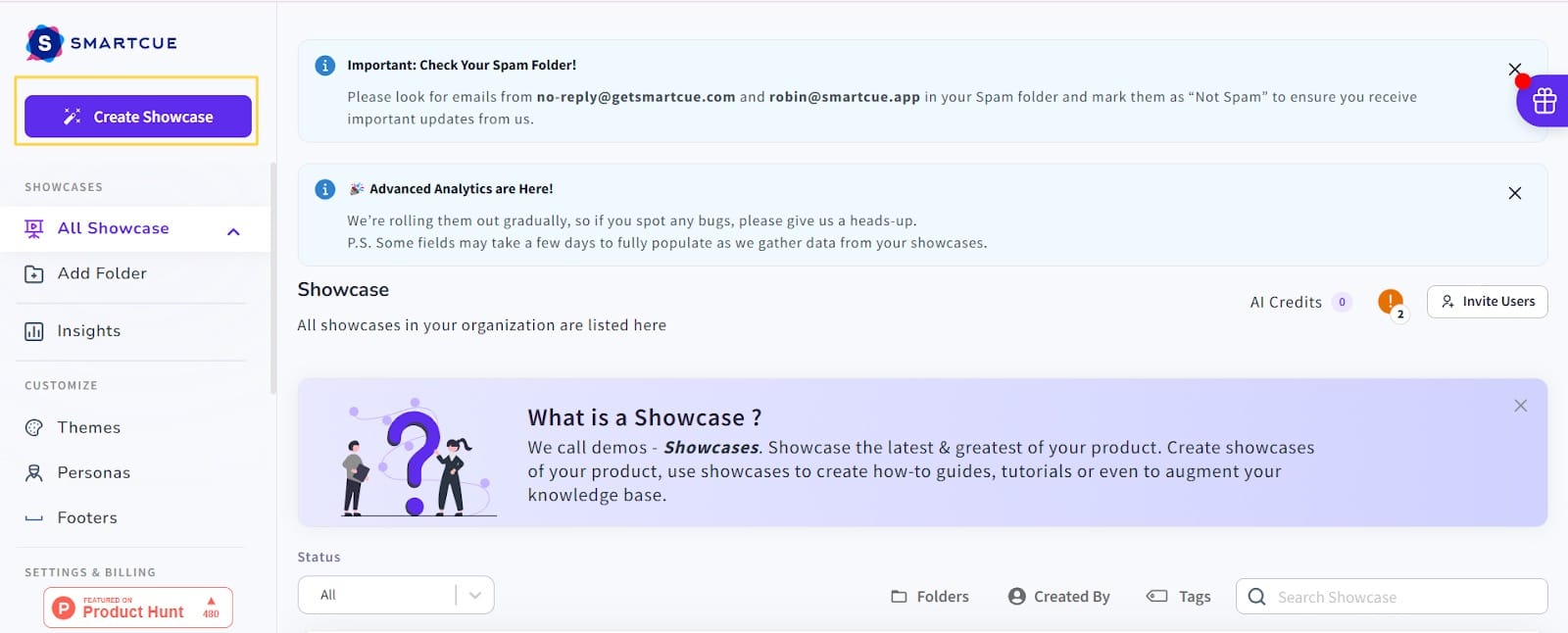
Click ‘Create Showcase’ and choose to record your screen or upload a file.
Enter the URL of the platform you want to showcase.
Step 3: Record with the SmartCue Chrome Extension
Use the Chrome browser extension to capture step-by-step interactions.
Pause, delete, or redo steps as needed.
Step 4: Edit & Customize
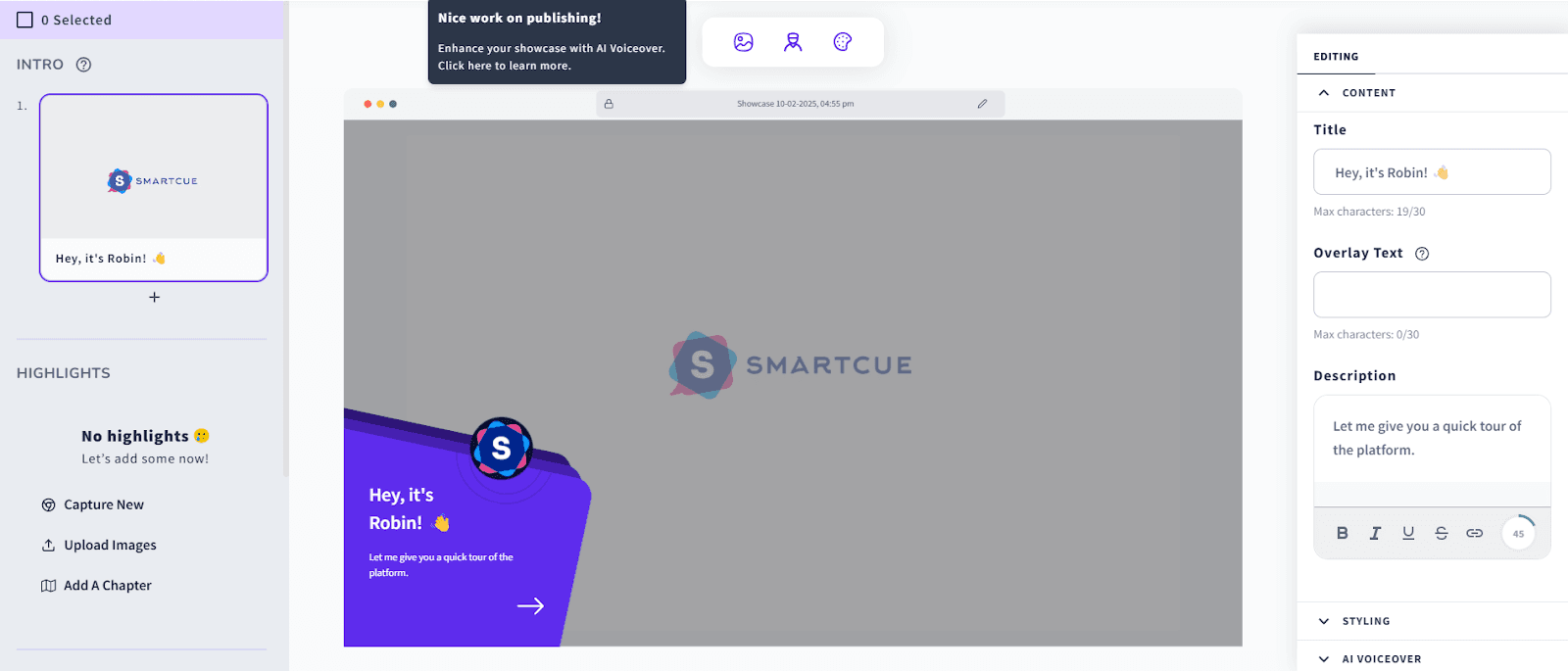
Use SmartCue’s tools to edit text, zoom, blur, or rearrange steps.
Keep instructions clear and concise.
Step 5: Publish & Share
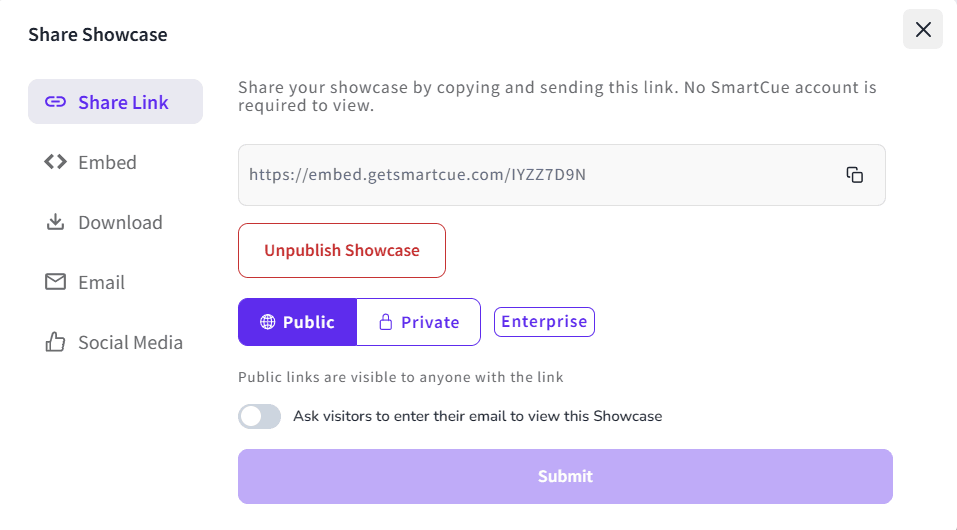
Click ‘Publish & Share’ to distribute your demo via email, website, or ads.
With just a few steps, you can create a compelling, interactive demo that helps users see your product’s value instantly.
5 Standout Examples of Businesses Using SmartCue
SmartCue powers interactive demos for businesses across industries like EdTech, legal, cloud security, HRTech, and more. Companies use it for onboarding, self-serve demos, product tours, tutorials, and email marketing, making product exploration seamless.
Here are five businesses leveraging SmartCue to enhance their user experience:
1. NexLvL – AI-Powered CRM
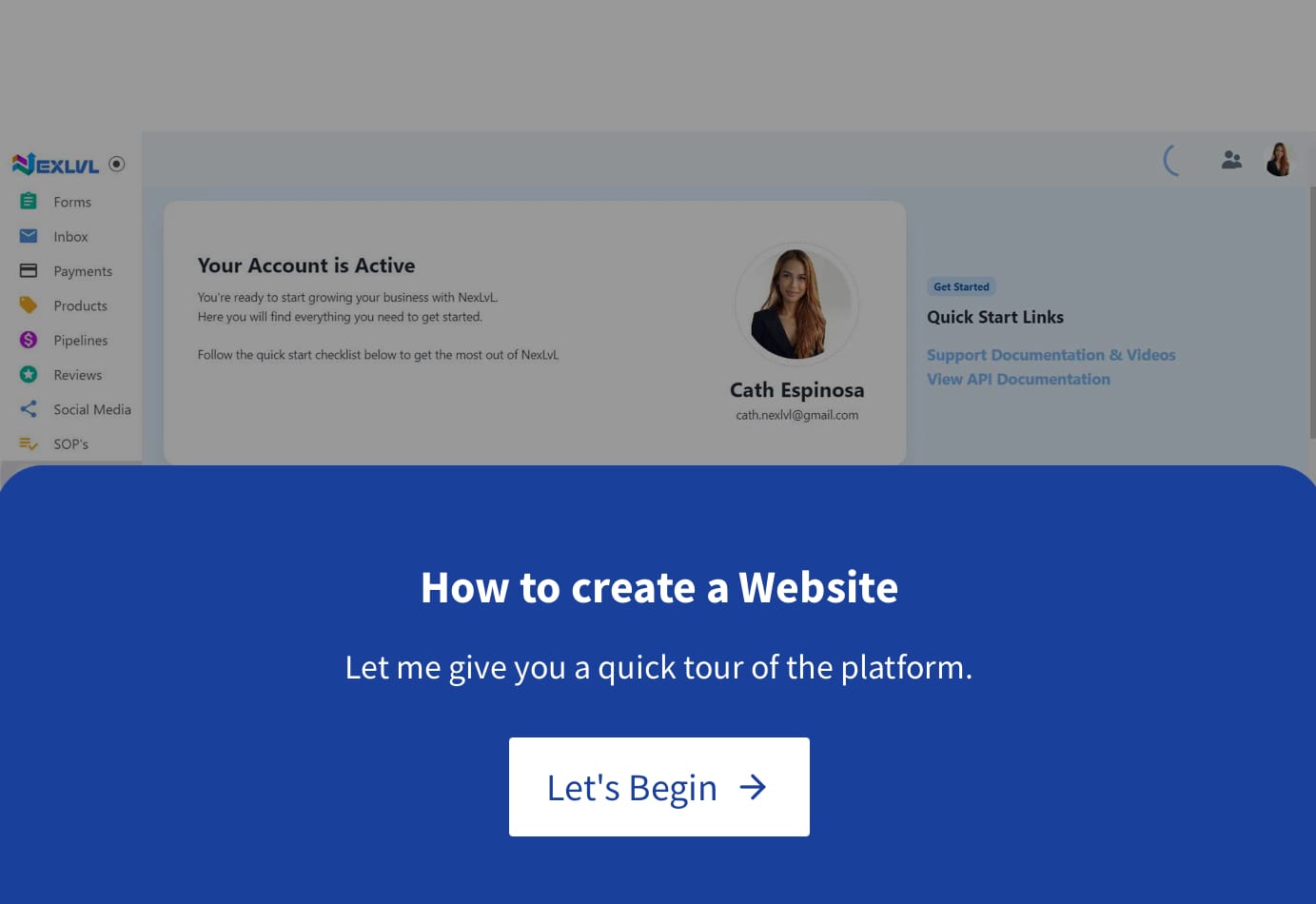
NexLvL, an all-in-one AI-driven CRM, uses SmartCue’s self-serve demos to let businesses experience features like automated workflows and chatbot integrations firsthand. These interactive tours help users see how the platform streamlines operations and improves customer engagement—without needing a sales call.
2. Strell – AI-Driven SEO Optimization
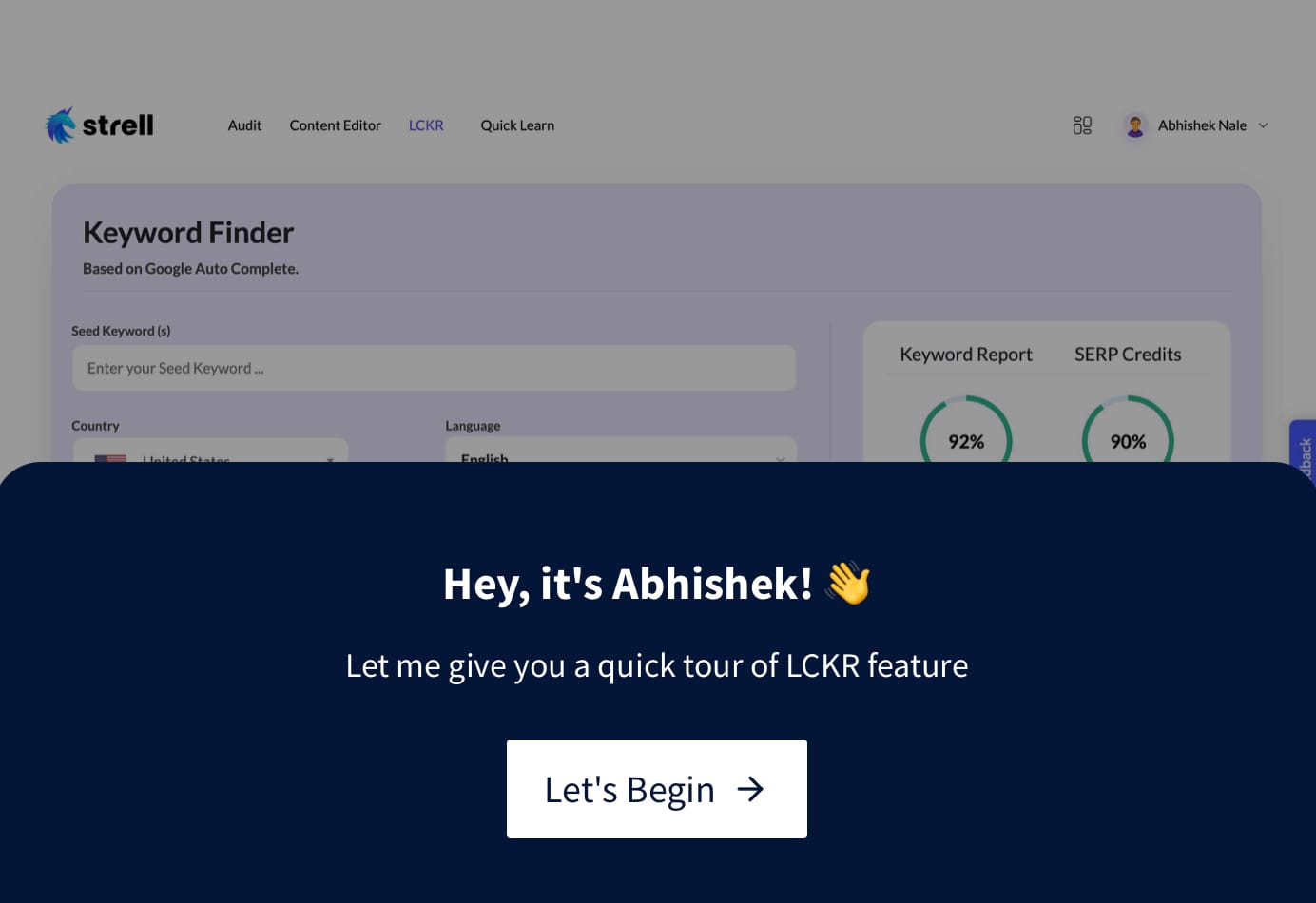
Strell, an AI-powered SEO optimization tool, integrates SmartCue to offer self-serve demos and guided product tours. Users can explore features like real-time data analysis and AI-driven SEO insights, making it easier to understand how the platform improves content strategy.
3. Bynry – Smart Utility Software
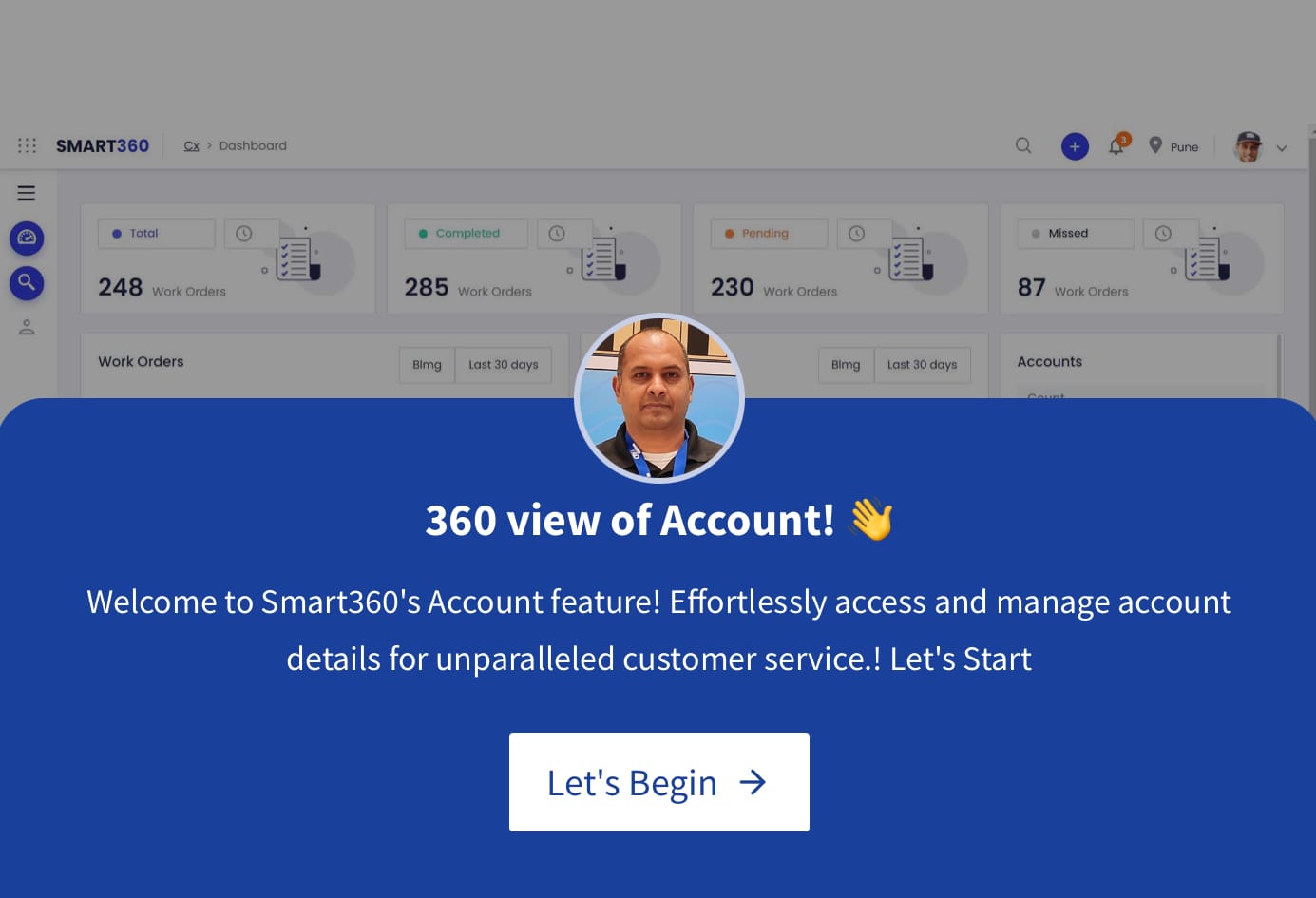
Bynry, a SaaS platform for smart utility management, leverages SmartCue’s interactive demos to highlight AI-powered analytics and automation. Prospects can explore product capabilities through guided experiences, making onboarding smoother and feature adoption faster.
4. Kloudle – Cloud Security Automation
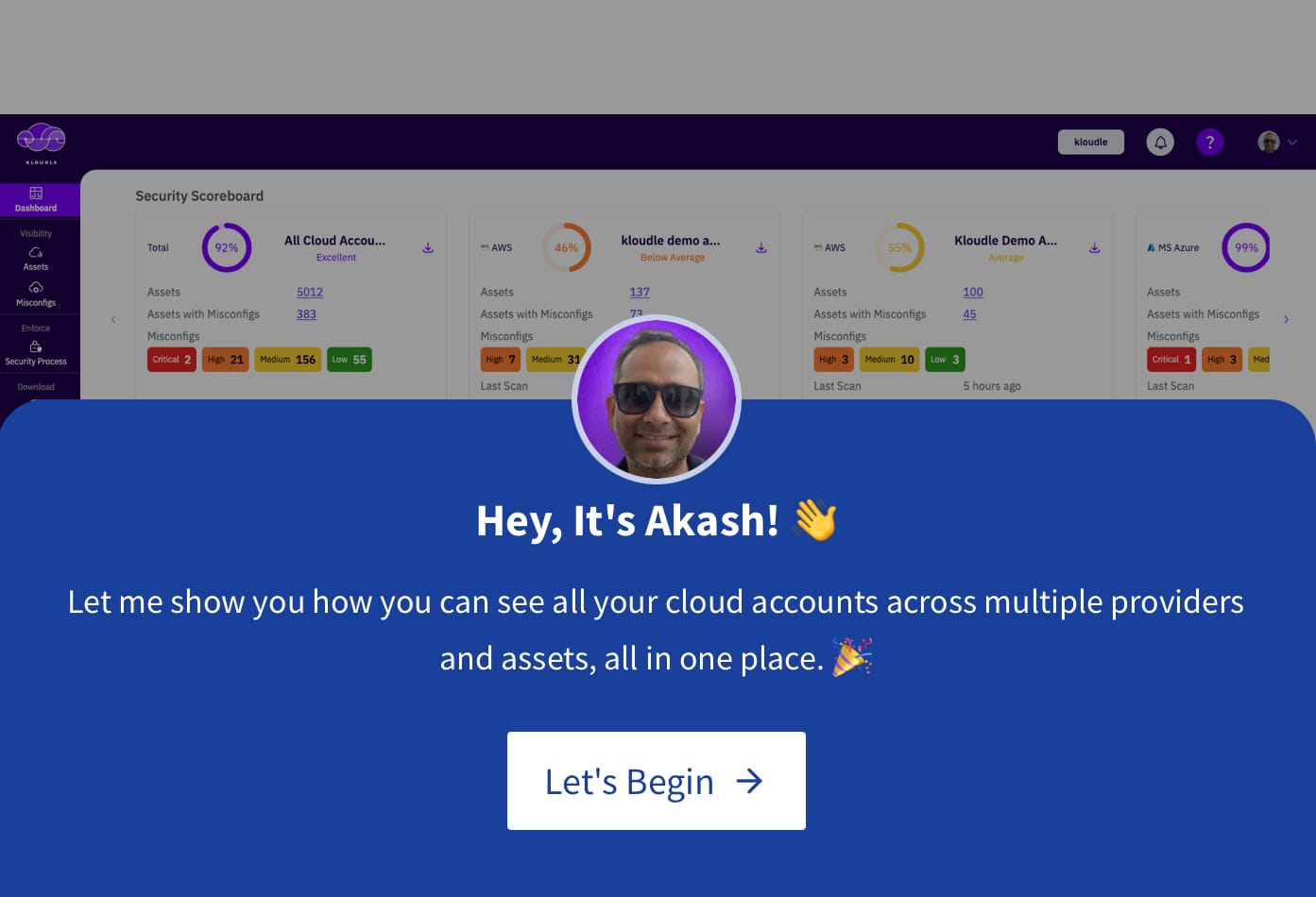
Kloudle, a cloud security automation platform, uses SmartCue’s product tours to help developers navigate security tools that minimize human error. These interactive walkthroughs provide step-by-step guidance, making it easier for users to adopt security best practices and integrate Kloudle into their workflows.
5. OceanFrogs – Automated Data Discovery
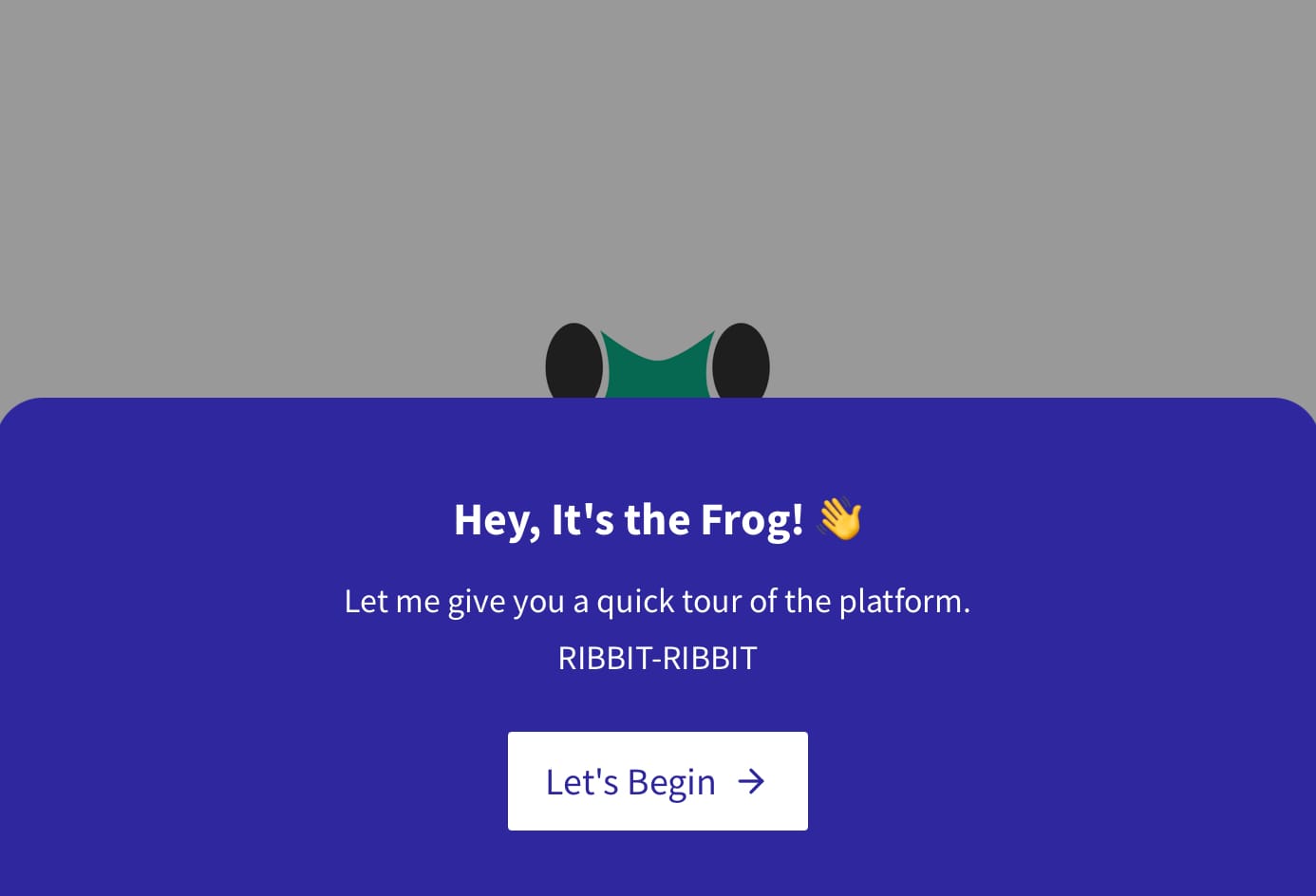
OceanFrogs, a platform for automated data discovery, utilizes SmartCue’s interactive tours to demonstrate how users can connect with targeted accounts and decision-makers. These self-guided demos simplify onboarding and ensure businesses can quickly leverage automation and AI-driven insights for better decision-making.
SmartCue isn’t just a demo tool—it’s a conversion accelerator. Whether for onboarding, higher engagement, or sales, businesses use it to let their product do the talking.
Final Thoughts: The Future is Interactive
Today’s buyers want instant value with zero friction. If they can’t experience your product immediately, they’ll move on.
Interactive demos let users explore your product on their terms, proving its value in real time. Tools like SmartCue make it easy to create engaging, self-serve demos that drive higher conversions and faster adoption.
The future of SaaS marketing is hands-on and interactive—are you ready to keep up?
Frequently Asked Questions
1. How do interactive demos help increase conversions?
Interactive demos let users experience your product without barriers—no sales calls, no sign-ups, just instant value. When potential customers can see your product in action, they trust it faster, leading to higher conversion rates and faster decision-making.
2. Will Interactive Demos Replace Traditional Sales Presentations?
Not entirely, but they will reshape the sales process. Interactive demos let prospects explore the product before or after a sales call, speeding up decisions and reducing friction. The best SaaS companies will use both—combining self-serve demos with strategic sales presentations for maximum impact.
3. Where should I embed my interactive demo?
You should embed your interactive demo where users are most likely to engage, such as your homepage for instant visibility or pricing pages to influence purchase decisions. It also works well in marketing emails and ads to drive immediate engagement or as part of sales outreach to warm up leads before a call. Placing it strategically ensures potential customers experience your product at the right moment.
